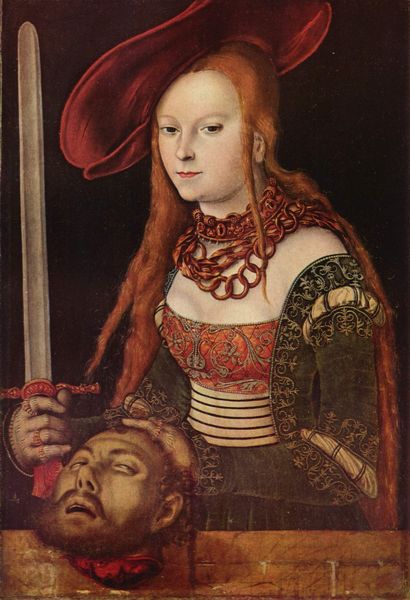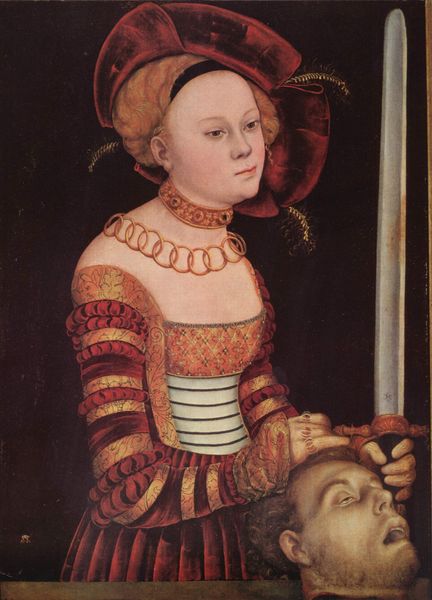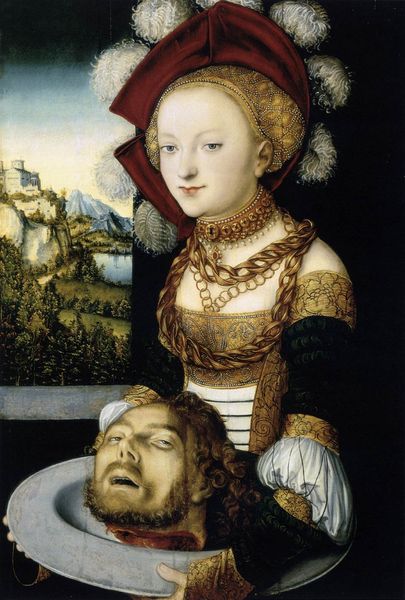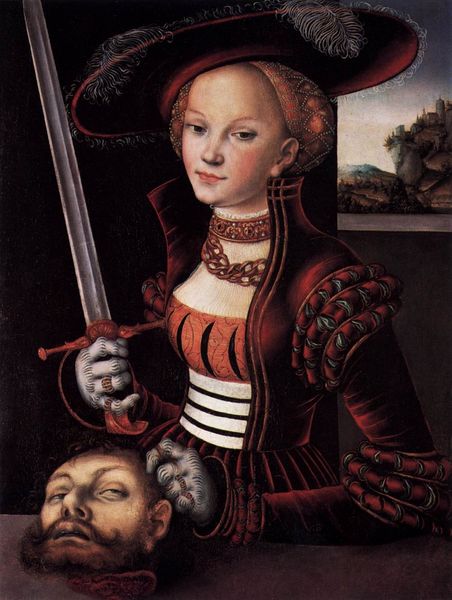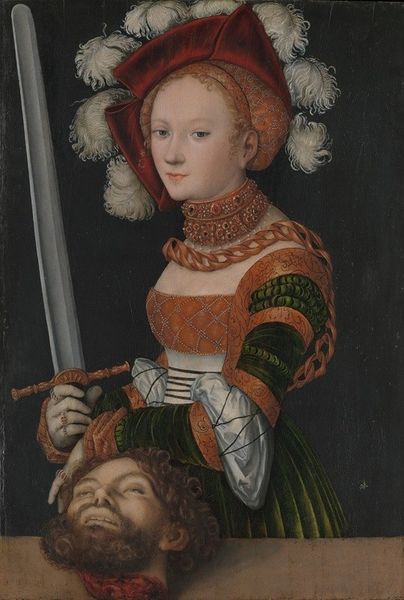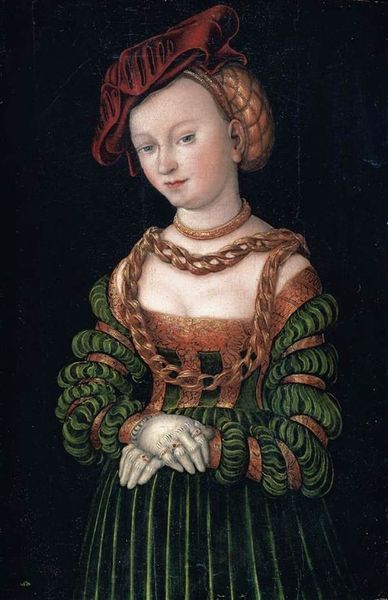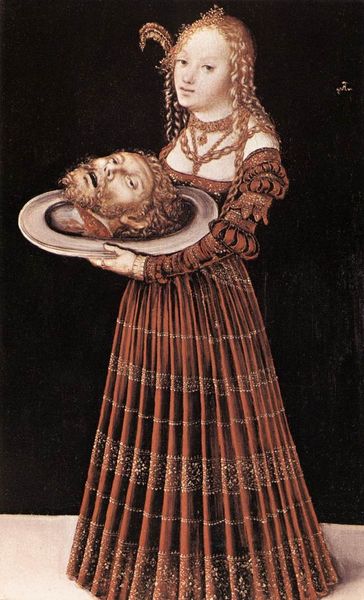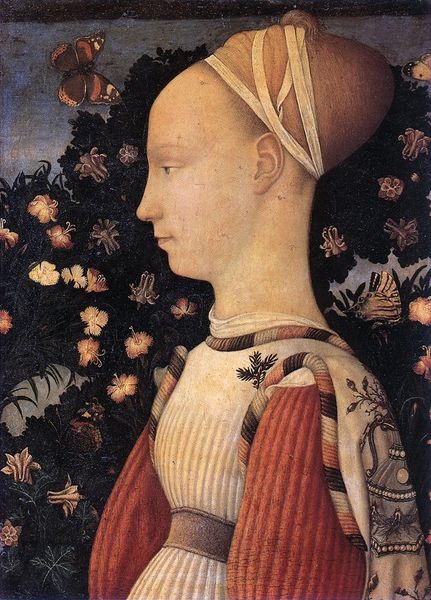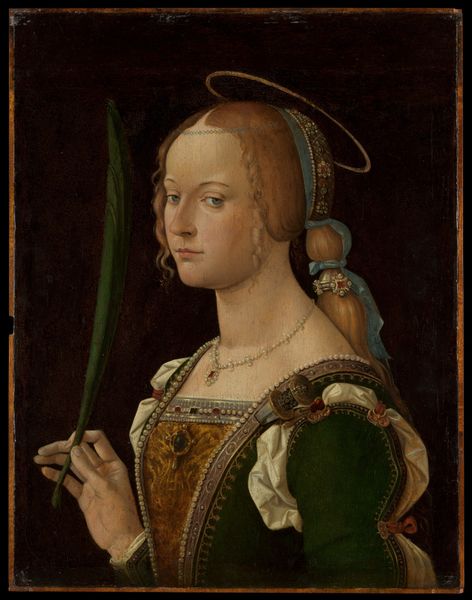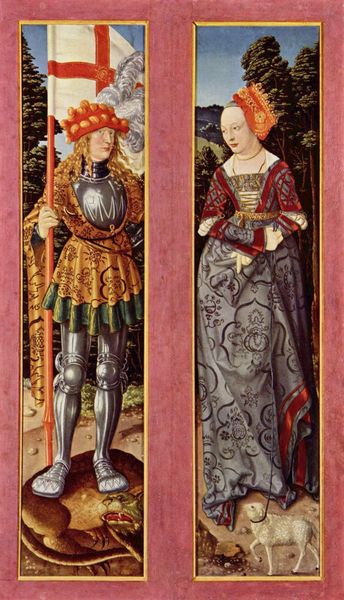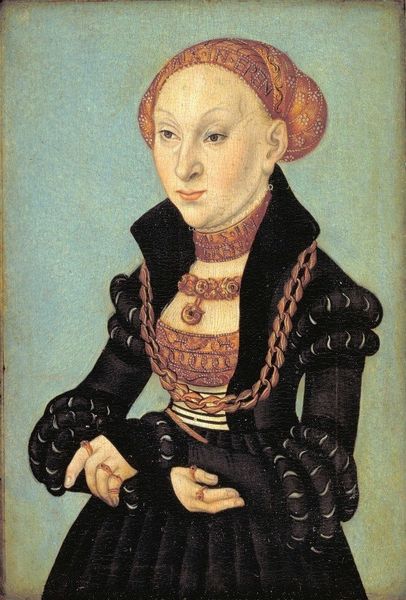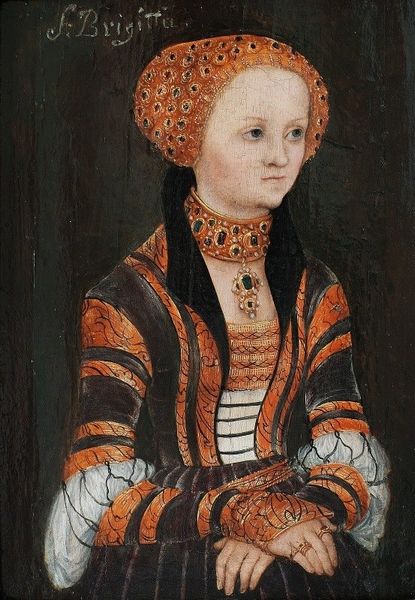
painting, oil-paint
#
portrait
#
painting
#
oil-paint
#
mannerism
#
figuration
#
oil painting
#
history-painting
#
northern-renaissance
Copyright: Public Domain: Artvee
Editor: Lucas Cranach the Elder's "Judith and Holofernes"... the painting's almost unsettlingly beautiful given its subject matter. The oil paint gives her dress a lusciousness, but the contrast with Holofernes’s severed head is stark. What can you tell me about the process or materials Cranach used to achieve such different effects? Curator: I see it as deeply entrenched in the material culture of its time. Cranach, as a painter close to the Wittenberg court, wasn't just depicting a biblical scene; he was crafting an object of display. Consider the oil paint: its richness wasn’t simply aesthetic. Oil paint was expensive; it was a marker of status. The detail of Judith's attire, that lush green velvet, isn’t just about artistry; it’s about signalling wealth and refined taste, both for the artist and the patron. Look closely at the sword. Notice any indication as to where that particular instrument may have originated? Editor: It’s so reflective. It seems the high level of detail reflects something of importance about it... I don't know anything about early sword making. How did manufacturing such instruments tie in to cultural power in Cranach's time? Curator: Exactly! Skilled artisans are required to produce weapons. They were incredibly valuable, like art; objects traded across regions. This is further emphasized by how Judith is staged: the very act of displaying this image is tied into contemporary conversations around female agency, religious authority, and the economics of artistic production. How do you think Cranach challenges, or perhaps reinforces, those social dynamics with his careful arrangement of color and material? Editor: So, it's about Cranach using materiality to negotiate and perhaps subtly comment on the complexities of his social context? Something that feels a world away. It's less a historical object and more an intersection of materials, skill, and social messaging! Curator: Precisely! Recognizing materiality allows us to see art as more than just aesthetics. Instead, it is deeply implicated within webs of labor, value, and cultural exchange.
Comments
No comments
Be the first to comment and join the conversation on the ultimate creative platform.
